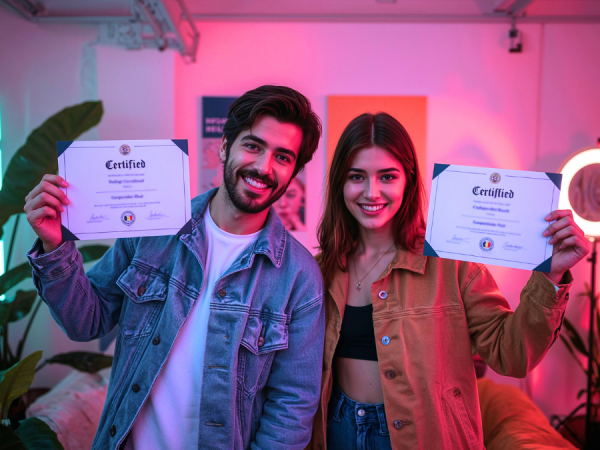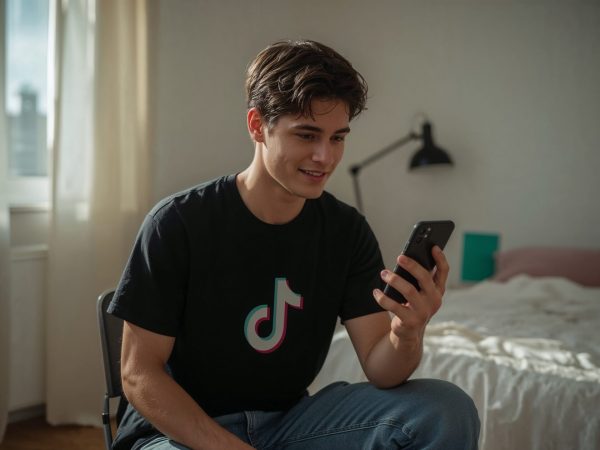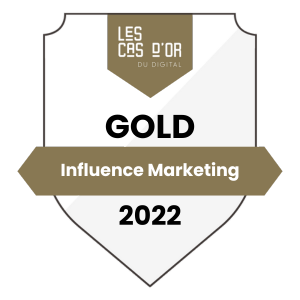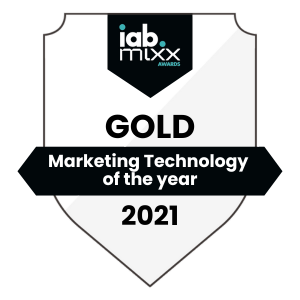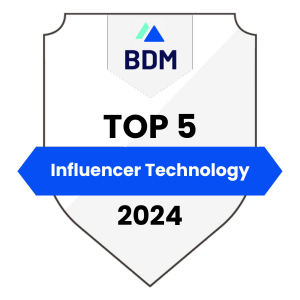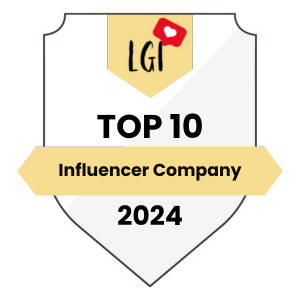When Instagram posts became visible on Google in July 2025, it marked a turning point for brands and agencies. For the first time, your influencer content can now appear in Google search results, reaching audiences who’ve never opened Instagram. This means your carefully crafted campaigns are no longer confined to social media feeds; they’re becoming part of your brand’s broader digital footprint.
We’ve already explained what this update means for influencer marketing. Now, let’s get practical: if you want to make the most of this shift, you need to brief your creators with SEO in mind. Here’s a step-by-step framework to help you brief your creators so their content works for both Instagram and Google (with precious help from Stellar, of course).
TL;DR: Instagram posts have been indexed on Google since July 2025, turning influencer content into long-term SEO assets. To leverage this, brands need to define priority keywords, select creators who already use them (via Stellar Discovery and Social Listening), and brief for SEO-friendly posts: keyword-rich openings, clear structure, descriptive hashtags, and alt text. Beyond Instagram engagement, performance must be tracked both in Google results and using Stellar Reports to measure lasting visibility and ROI. This shifts influencer marketing from short-term reach to sustainable search presence.
Why this changes everything for your brand
Picture this: your brand runs a campaign around your latest “eco-friendly denim jacket.” Six months later, a potential customer types that phrase into Google. Instead of just fast-fashion listings, they find an authentic Instagram Reel from a creator styling your recycled denim jacket. That’s organic discovery you can’t buy with traditional ads.
And here’s the kicker: your audience is already searching on both: 81% of women and 78% of men aged 16–24 use social media as their main brand research tool according to Meltwater. Combine that with Google’s reach, and you see the opportunity: by briefing your creators with SEO in mind, you’re making your brand discoverable everywhere your audience looks.
The 4-step framework for SEO-optimized influencer campaigns
Step 1: Define your SEO keywords strategy
Start by mapping out the keywords that matter most to your brand and campaign goals. This goes beyond product names: think about the full customer journey.
- Branded keywords are your foundation: company name, specific product lines, and campaign names. Examples include “Nike Air Zoom,” “Tesla Model 3,” or “Summer Glow 2025.”
- Non-branded keywords capture the problems your product solves: “sustainable fashion on a budget,” “5-minute morning workout,” “Korean skincare for sensitive skin.” These help you reach people who don’t know your brand yet but need what you’re selling.
- Long-tail keywords match how people actually search. Instead of competing for “coffee,” target “best coffee for productivity” or “how to make iced coffee without diluting it.” These longer phrases often have higher purchase intent.
Research what your audience searches for using Google Trends, or even observing what creators and their audiences in your space naturally write about. The ultimate secret to efficient SEO is simple: always speak your customers’ language, not marketing jargon.
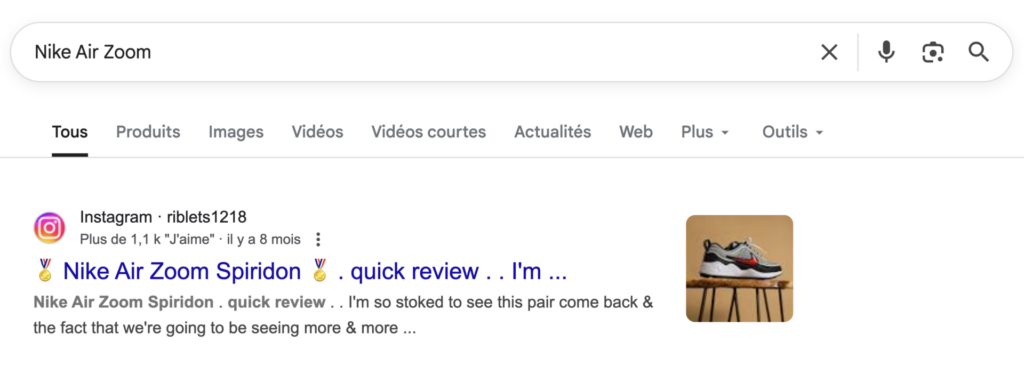
Step 2: Find creators who already speak your language
Here’s where Stellar’s Discovery, powered by AI, saves you hours of trial and error. Instead of trying to convince a fashion influencer to suddenly talk about “eco-friendly fashion,” you can simply type that keyword into Discovery’s search bar. The AI engine will instantly surface profiles that already talk about this topic, and other related ones, and rank them based on audience, relevance and engagement.
For example, if your campaign keyword is “eco-friendly fashion,” the Discovery tool will point you to creators who are already posting captions like “5 sustainable outfit ideas for summer” or “why I only buy recycled denim.” This content feels authentic to their community, and now, thanks to Google indexing, it carries SEO value as well.
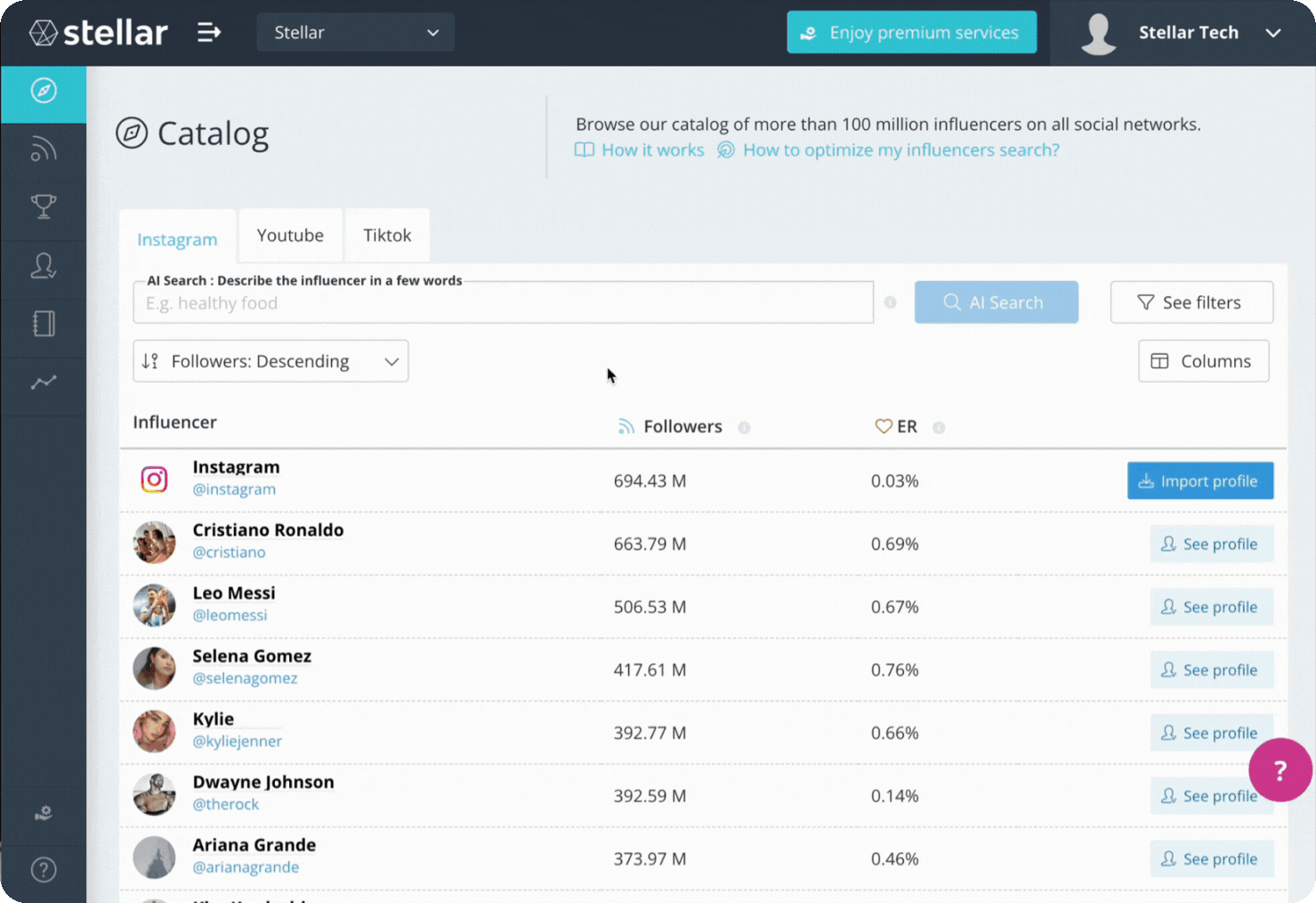
You can take it a step further with social listening: track who’s consistently discussing sustainability in fashion, not just for a one-off partnership. A creator who’s been posting about “ethical fabrics” for months will sound far more credible than someone mentioning it for the first time because you paid them.
One last check: make sure the account is set to public. Only public posts can be indexed by Google.
Step 3: Brief your creators for SEO-friendly content
Before we dive in, make sure you’ve got the basics covered. We’ve created a ready-to-use influencer brief template you can download, fill in, and send directly to your creators. It’s the fastest way to align on campaign goals, deliverables, and timelines.
What we’re adding here is the SEO layer: the extra instructions that ensure your creators’ posts aren’t just on-brand, but also discoverable on Google.
Captions that front-load keywords
If you’re a sustainable sneaker brand, don’t just ask for a product shot. Guide your creators to open with phrases like “My go-to eco-friendly sneakers for city walks” or “5 sustainable footwear that actually looks good.” Google pays attention to the beginning of captions, so putting keywords up front makes the content more searchable.
It will also allow your main keywords to be visible from the Google Search results.

Readable, structured posts
Long caption blocks get skipped… by both people and algorithms. Encourage creators to use short, scannable chunks, in a style that feels authentic, but also gives Google more context. For example:
“Just tried the new @YourBrand vegan sneakers 🌱
The comfort level? Incredible.
The style? Minimalist and timeless.
The ethics? 100% cruelty-free materials.
Perfect for weekend exploring. Who else is making the switch to sustainable footwear?”
Hashtags that actually help
Hashtags aren’t the reach boosters they once were, but they still help categorize content, especially for Google indexing. They also help Instagram understand more easily what your content is about.
The trick is to keep them relevant and limited: a few well-chosen, descriptive hashtags are far more effective than a wall of thirty. Also, remember that generic hashtags don’t carry weight. Instead of #love or #ootd, brief your creators to use descriptive, searchable terms:
✅ #vegansneakers #sustainablefootwear #ethicalfashion
❌ #instagood #shoegame #fashionlover #fyp
Visuals with context
Google can’t “see” an image without help. Suggest creators use Instagram’s alt text field (in your advanced settings) with descriptive phrases like “white vegan sneakers on recycled wood floor with organic cotton laces.”
For Reels, text overlays such as “Cruelty-free sneakers that don’t compromise on style” reinforce the message and make it indexable.
The point isn’t to make influencers sound like SEO robots. It’s to layer in small, natural optimizations that fit their voice, while giving search engines (and audiences) the signals they need to connect your brand with the right topics.
Step 4: Monitor, measure, and optimize
The real difference between a one-off campaign and a lasting SEO win is what you do after the posts go live. Now that Instagram posts can surface in Google, you need to check how they perform in search too.
Say you’ve just run a campaign on eco-friendly fashion. A week later, type your priority keyword, for example “sustainable denim jacket”, into Google. Do any of your creators’ posts appear? How do they look in the results? Is the snippet compelling enough to click?
This matters because, unlike Instagram’s 48-hour engagement curve, Google visibility can last for months. A strong caption with clear keywords and a good visual might keep showing up long after the campaign ends, bringing in organic discovery you never paid for.
In other words: don’t just brief and forget. Test, measure, and refine. The brands who adapt fastest will be the ones whose influencer content dominates both the feed and the search results.
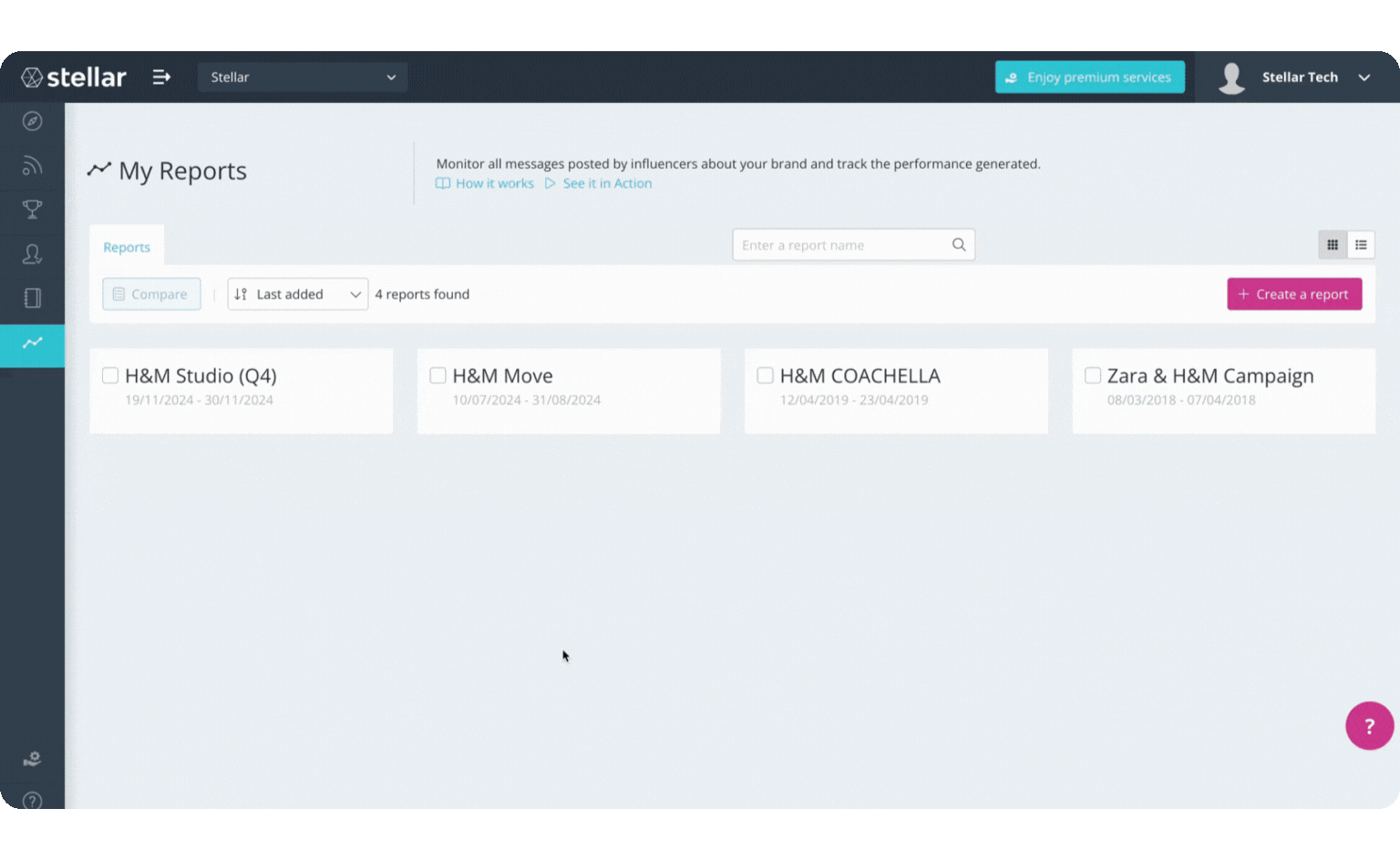
With Stellar Reports, you can track the performance of influencer content in real time, from engagement to clicks, conversions, and ROI. Combined with regular checks on how posts appear in Google, this gives you a full picture of which creators generate not just short-term engagement, but lasting visibility.
What if I can’t find my Instagram posts on Google?
If you want to check whether a collaboration post has been indexed, try searching a sentence from the caption in quotes on Google. For example: “Eco-friendly sneakers that actually look good”
If nothing comes up, don’t panic. There are a few reasons why a post might not show up:
- Timing: Google may take days (sometimes weeks) to crawl and index Instagram content.
- Selectivity: With billions of posts, Google doesn’t index everything — it prioritizes what it sees as relevant or unique.
- Format: Text-light content (just an image or a reel with no real caption) is harder for Google to pick up.
- Platform limits: Even for public accounts, Instagram restricts how quickly Googlebot can crawl posts.

Sometimes it’s just a matter of patience… and sometimes Google simply decides not to index a post. That’s why strong briefs and SEO-friendly content matter: they give your collaborations the best possible chance to appear where your audience is searching.
Laureline Jozic, copywriter & SEO specialist @Stellar Tech
Key takeaways
If you want your influencer campaigns to perform on both Instagram and Google, here’s what matters most:
- Start with the right keywords. Define 3–5 priority terms for your brand or campaign.
- Choose creators who already use them. With Stellar Discovery’s AI search, find profiles whose language naturally aligns with your goals.
- Brief for SEO-friendly content. Captions that front-load keywords, use clear structure, descriptive hashtags, and alt text are more likely to be indexed.
- Stay realistic about hashtags. They’re not magic anymore, but a few well-chosen ones help with context and indexing.
- Track beyond likes. Monitor which posts surface in Google and feed those insights back into your next campaign.
Influencer marketing has entered the SEO era. With the right creators, the right briefs, and the right tools, your brand can secure visibility that lasts long after the campaign is over.
Master Instagram SEO with Stellar
Discover how your influencer campaigns can drive lasting visibility on both Instagram and Google.

